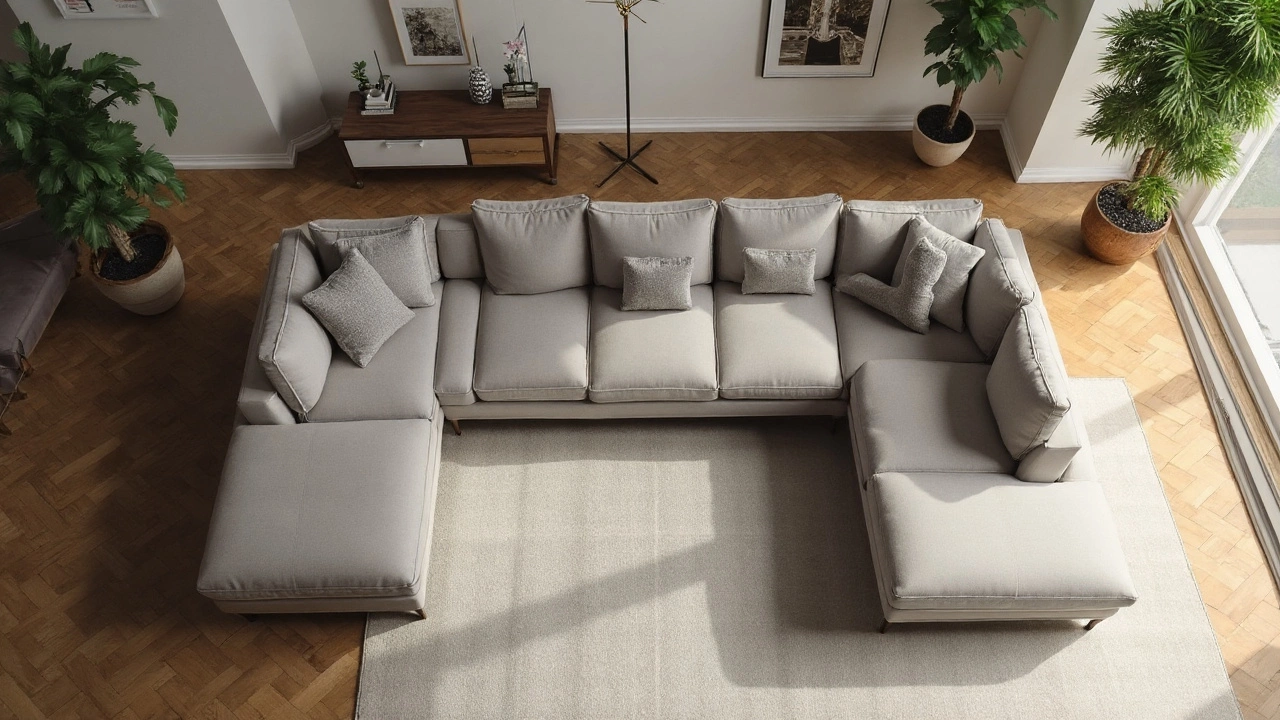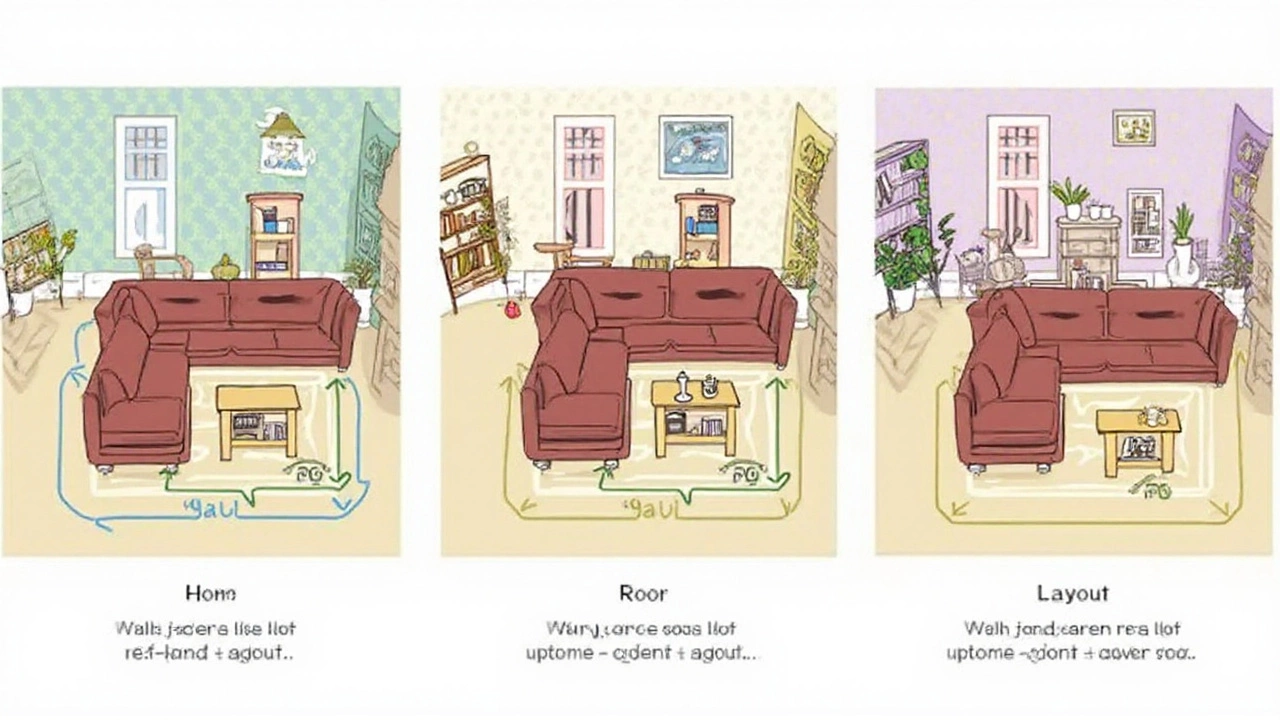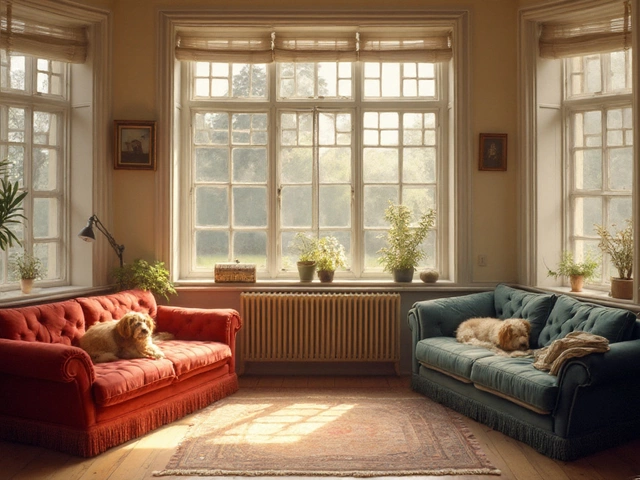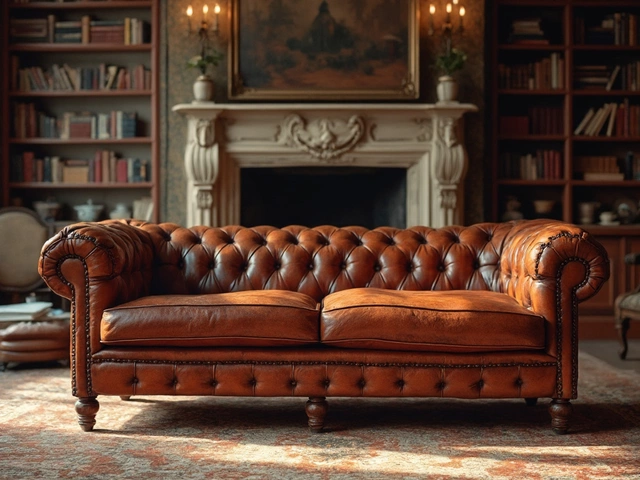 6
Aug,2025
6
Aug,2025
Picture this: You’re shopping for a new sofa online and you see “left-hand facing corner sofa” pop up everywhere. Maybe you’re staring at your lounge, measuring tape in hand, wondering why some sofas are called left-hand or right-hand facing. It sounds simple. But then the diagrams start to blur, product images get confusing, and the last thing anyone wants is to drop a chunk of cash on a sofa that points the wrong way.
What Does ‘Left-Hand Facing Corner Sofa’ Actually Mean?
So, what are retailers really saying with “left-hand facing corner sofa”? It’s not just a fancy way to say “a sofa with some extra bits.” It matters, especially when you’re trying to make your living room make sense. The secret? Stand at the center of the main part of the sofa and look at the corner section—also called the chaise or the extendable bit. If that extra piece is on your left, bam, you’re looking at what the furniture world calls a left-hand facing sofa. This can feel counter-intuitive until you break it down in plain language.
Here’s a mental picture: Pretend you’re looking straight at the sofa (not from behind) and the longer chunk—the bit you’d likely stretch out on—extends to the left. That’s it. Left hand. If the longer side sticks out to the right, it’s a right-hand facing. No tricks, no upside-down rules. This slight distinction is why so many people mess up their orders. It doesn’t help when sellers use stylized computer images without context. It also doesn’t help that some countries flip the terminology, but the UK and US mostly agree on this left/right system.
Why does it matter? Ever had a sofa crammed in backwards, blocking windows or making your room feel lopsided? Getting this part right is why your space ends up open, walkable, and not a claustrophobic obstacle course. Plus, couches are expensive, especially for big family sections. Picking the wrong orientation means you’re stuck or paying for awkward returns. Stores report corner sofa returns cost them millions every year, mostly from customers picking the wrong left/right side. Definitely something best figured out before delivery day.
For people who love odd facts: According to a 2023 survey by Furniture Choice UK, about 65% of buyers weren’t sure which orientation worked for their homes until they whipped out a tape measure and mapped out their room. So, don’t worry if you need to stand there turning in circles at the showroom—most folks do the same.

How Left-Hand Facing Sofas Fit Into Real Homes
Style and function—these corner sofas do double duty. Let’s get practical: corner sofas are everywhere for a reason. More than 50% of new lounge furniture sales in the US in late 2024 were sectionals, driven by open-plan homes and the Netflix effect (let’s admit it, most of our evening socializing happens on the sofa these days). But nailing the right orientation can really make or break your setup. Miss it, and you’re forever dodging awkward corners or staring at the back of someone’s head.
Left-hand facing sofas work best in rooms where you want the longer extendable section to run along the left wall, opening up walking space toward the right. For example, if your main entryway or pathway sits to the right of your living area, a left-oriented corner keeps everything feeling open and guides traffic away from TV screens or conversation zones. It can almost feel like your sofa’s pointing the way people should flow through your space. What about windows? If the best natural light cuts across your room’s left side, placing a left-hand facing sectional there means nobody’s forced to stare into full sun or block that light with a wall of upholstery.
Families with big spaces often use left-facing corners to create zones—think a play area on one end, a reading nook on the other. Renters in smaller flats tend to use them to scoop up extra seating without eating into the walking areas by kitchens or hallways. Students make the most of these in weirdly shaped living rooms; just push the left-hand section into an odd nook, and boom—instant extra seating.
Let me share a relatable story: I once helped a friend move a giant left-handed corner into his first apartment. The plan was to split the open-plan into “living” and “dining” in a space barely wide enough for a table. The left orientation tucked the sofa along a wall, saved walking space, and made the room feel twice as big. That’s not rare—almost every major interior blog you scroll these days shows off left-handers as the clever trick for tricky rooms.
And yes, kids and pets come into play. The L-shape often becomes a “base camp” for little ones and furry friends because there’s a cozy enclosed feel, but still clear sightlines for parents to keep an eye on the action. It’s why this shape remains the ‘go-to’ for family homes and AirBnBs alike—everyone wants comfort, without letting a sofa swallow half the room.
Here’s a handy breakdown of room types and which facing often works:
| Room Feature | Ideal Sofa Orientation |
|---|---|
| Entry door on right | Left-hand facing |
| Window on left | Left-hand facing |
| Open kitchen to right | Left-hand facing |
| TV/fireplace on left | Right-hand facing |
| L-shaped room with recess left | Left-hand facing |
| L-shaped room with recess right | Right-hand facing |
Notice how the space guides your choice—not just what looks best online. Yes, symmetry lovers and perfectionists: sometimes you’ll want both a left and a right in open, double-living rooms, or modular setups where you snap different bits together.

Tips for Choosing the Right Corner Sofa and Making It Work
So, you’re ready to shop. Or at least not get ripped off by a badly chosen sofa. Here are real-world tips that keep buyers from making expensive mistakes. First, always measure twice. Don’t just guess the length of each wall; actually lay out tape or string to see what the sofa will cover. Many stores, like IKEA and Wayfair, even have free online planners for this exact scenario.
When you see a label that reads “left-hand facing,” check if they mean as you look at it or as you sit on it. About 20% of online returns are because the product page wasn’t clear. Some manufacturers (especially in Europe) use the opposite convention—left when you sit, not when you look. So, double-check the diagrams. If the store doesn’t specify and you’re unsure, call or email. A quick two-minute chat can save you weeks of hassle.
- Use paper or masking tape to mark out the sofa on your floor. This gives you a real feel for the space it’ll take and how people will walk around it.
- Think about power outlets and radiators. Will a left-hand corner block a window or plug you need? If so, try a right-hand instead.
- Check the seat depth and height. Not all corners are snuggle-ready for everyone—especially if you’re tall or short. Left-hand sections often have longer stretches, so sit down before buying if possible.
- Ask about modularity. Some modern sectionals are “reversible”—you can swap sides. Others are fixed. Don’t assume yours can flip after delivery.
- Factor in doorways, stairwells, and elevators. More than one delivery team has wrestled a left-facing sofa through a turn only to find it won’t fit. Measure those too.
- If you move often, try lightweight sectionals with attachable arms and backs. The left-hand part should be easy to detach and rotate as your floor plan changes.
- For families or pets, look for washable covers—spills almost always happen in the corner!
- Match your rug. If your main rug is rectangular, a left-hand facing corner sofa usually looks best with the longer sofa edge following the ‘long’ side of your rug.
- Accessorize for comfort. Add throws or cushions to the corner to make the most of that built-in movie-watching nook.
Let’s talk about cost for a second. Not all corners are created equal. According to the 2025 National Living Spaces Report, the average price for a high-quality left-hand facing sectional in the US sits between $1,200 and $6,000, but you can grab a basic model from fast-furniture brands for as little as $450. Just keep in mind: you usually get what you pay for with frame strength, cushion fill, and stain resistance. Over 80% of shoppers say they’d rather wait a couple of months for delivery and get durable fabric and solid wood frames than rush a cheap, wobbly import. Makes sense—nobody wants a saggy, creaky couch right after moving in.
Shopping in-person? Always ask sales staff if their display models face left or right. Showrooms sometimes mirror layouts for display purposes, so the one on the floor might not match what’s actually for sale. And if all else fails, bring your room photos. With today’s smartphone AR, many furniture stores let you virtually drop that left-hand facing sofa right into your space before you spend a dime.
One last trick: If you’re torn between left and right, modular sofas—where each piece “clicks” into the next—are on the rise. This way, you can mix, match, or move sections around, and always get the perfect fit no matter how often you redecorate or switch flats. Sofology’s sales data from last year displayed a 34% jump in modular sofa sales for exactly this reason.
Bottom line? A left-hand facing corner sofa does more than just fill a room—it shapes the flow, style, and comfort of your whole living space. Once you crack the left/right code, your sofa won’t just look right; it’ll finally feel like home.




